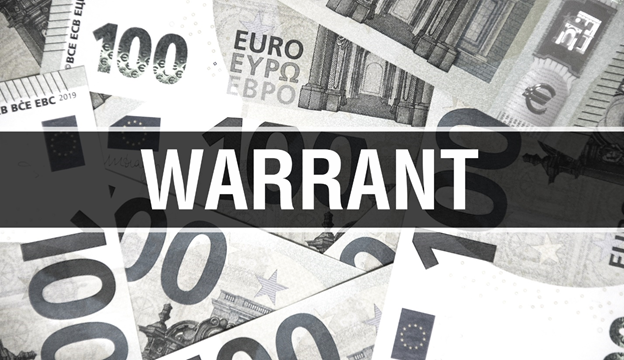What is warrant coverage?
Warrant coverage is an agreement by the company's shareholders, making them eligible to buy shares equal to a percentage of their original investment value. It is an assurance given to one or more shareholders of a company to be able to increase their holdings when the value of the company goes up. It is a common mode of payment during an acquisition or can be given as an incentive to key employees. It acts as a guarantee for shareholders allowing them to buy more at a stipulated price.
Highlights
- A warrant coverage provides an option to its holders to purchase a certain number of underlying securities at a pre-set future price.
- It is beneficial to holders as warrants are detachable and sold for short-term fund needs while keeping original investment intact.
- Companies that issue warrant coverage often end up enhancing market demand and exchangeability of their capital offering.
Frequently Asked Questions (FAQ)
What is warrant?
A https://kalkinemedia.com/definition/w/warrantwarrant is a type of security that provides an option to its holders to purchase a certain number of shares at a pre-set future price. Warrants are often issued alongside bonds or preferred stocks.
Warrants are like outstanding debt rather than assurance, but not exactly debt by nature. Instead, it is a right to purchase securities within a specific price from the issuing company at a specific time. A warrant usually comes with an expiry date till which holders can buy the shares.
Warrants are a tool for boosting investor returns. Higher returns are achieved from the appreciation of the issuing firm's equity value.

Image Source: © Richelle538 | Megapixl.com
How does a warrant cover work?
Warrants usually give the holder a right and not an obligation to buy a certain number of ordinary shares. However, they are not the same as options or share purchase rights. An important feature of warrants is that they are detachable. Investors hold a warrant coverage on their shares; they can sell the attached warrants and keep the original security. It may sometimes be beneficial to holders because warrants can be detached and sold for short term fund needs. It will keep the original investment and returns on it in place. Now warrant coverage doesn't always allow the holder to purchase an ordinary share. Still, sometimes under warrant coverage, the purchaser can get bonds of issuing or another entity like a subsidiary as well. The price at which the warrant holder can purchase warranted securities is called the exercise price or strike price. It is often higher than the prevailing market price of the shares when the warrant was issued.
Examples of warrant cover-
Consider a company Mega Ltd. that issues $500 million bonds, and the warrant coverage on bonds is 30%. Let's say the warrant gives them the right to purchase 15 ordinary shares of Mega Ltd. at $10 per share, so it will be allowed only up to a total of $150, which is 30% of the $500 face value. In this example, the exercise price for Mega Ltd. shares is $15, which can be over 10-20% higher than the price at which Mega Ltd. shares were trading when the bonds with warrant coverage were issued.
Consider another example, that an investor Mr Ultra, purchases 1,000 shares of Mega Ltd. at $5 per share, making his investment worth $5,000 in Mega Ltd. Now, if the company grants 20% warrant coverage to Mr Ultra, he can get additional shares worth $1,000 at a prefixed exercise price per share. With these warrants, Mr Ultra gets an additional downside risk protection as he will be issued shares at the prefixed price. However, it would also give Mr Ultra an additional upside benefit if the share price of Mega Ltd moves up significantly.

Image Source: © Djbobus | Megapixl.com
Why is warrant cover important?
- Warrant coverage helps holders participate in the upside price movement of the underlying security. Therefore, the higher the underlying value, the higher the value of warrant being a percentage of the underlying value.
- Investors also gain benefits of diversification and risk mitigation by purchasing one type of security. The warrant coverage may be for bonds, ordinary shares, or preferred stock of a company.
- Companies that issue warrant coverage often end up enhancing market demand and exchangeability of their capital offering. It is beneficial as it lowers the issue cost of capital.
- Warrant coverage also enhances the participation of investors in the company, pushing it towards growth.
- Warrant coverage provides an option or a right but not an obligation to buy additional underlying securities at a specific price.
- It is a chance to gain ownership benefits, even for bonds or other security holders.
What are some terms used with warrant cover?
Some terms specific to warrant covers are-
Number of Class of Warrants- it indicates the number of securities guaranteed under the warrant cover. It is often a function of a valuation target when a warrant coverage is issued for the acquisition of a company.
Exercise Price- is the prefixed price at which the warrant holder can buy the underlying. It is typically based on the "fair market value" of the warrant.
Cashless Exercise- it is used when the warrants are exercised without any actual expenditure of cash. The warrant holders receive an increase in the value of shares from the original exercise price without any cash outflow.
Duration or Expiry date- It indicates the time for which the warrant coverage is valid. It is a pre-fixated number of years during which the warrant coverage can be utilised.
 Please wait processing your request...
Please wait processing your request...